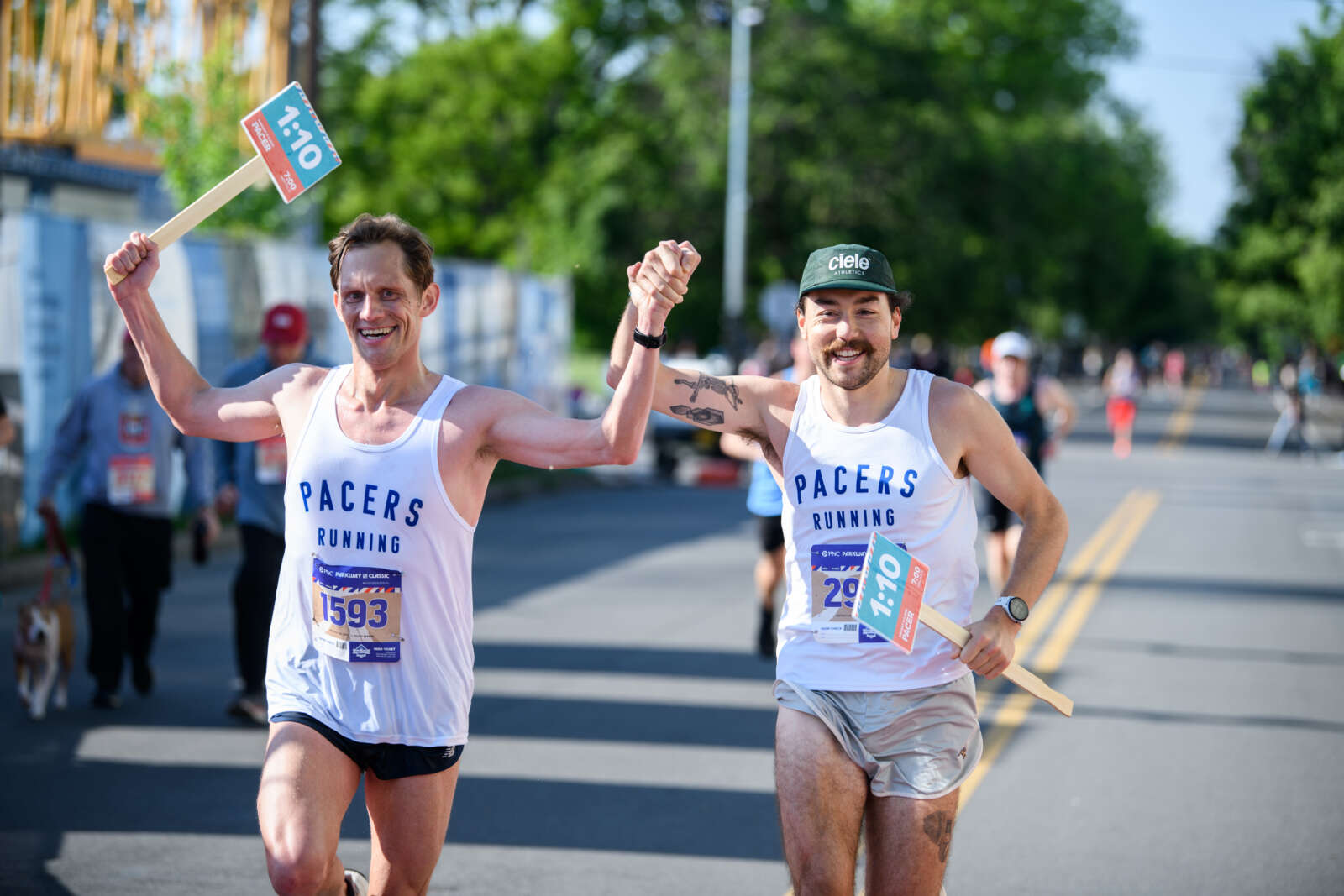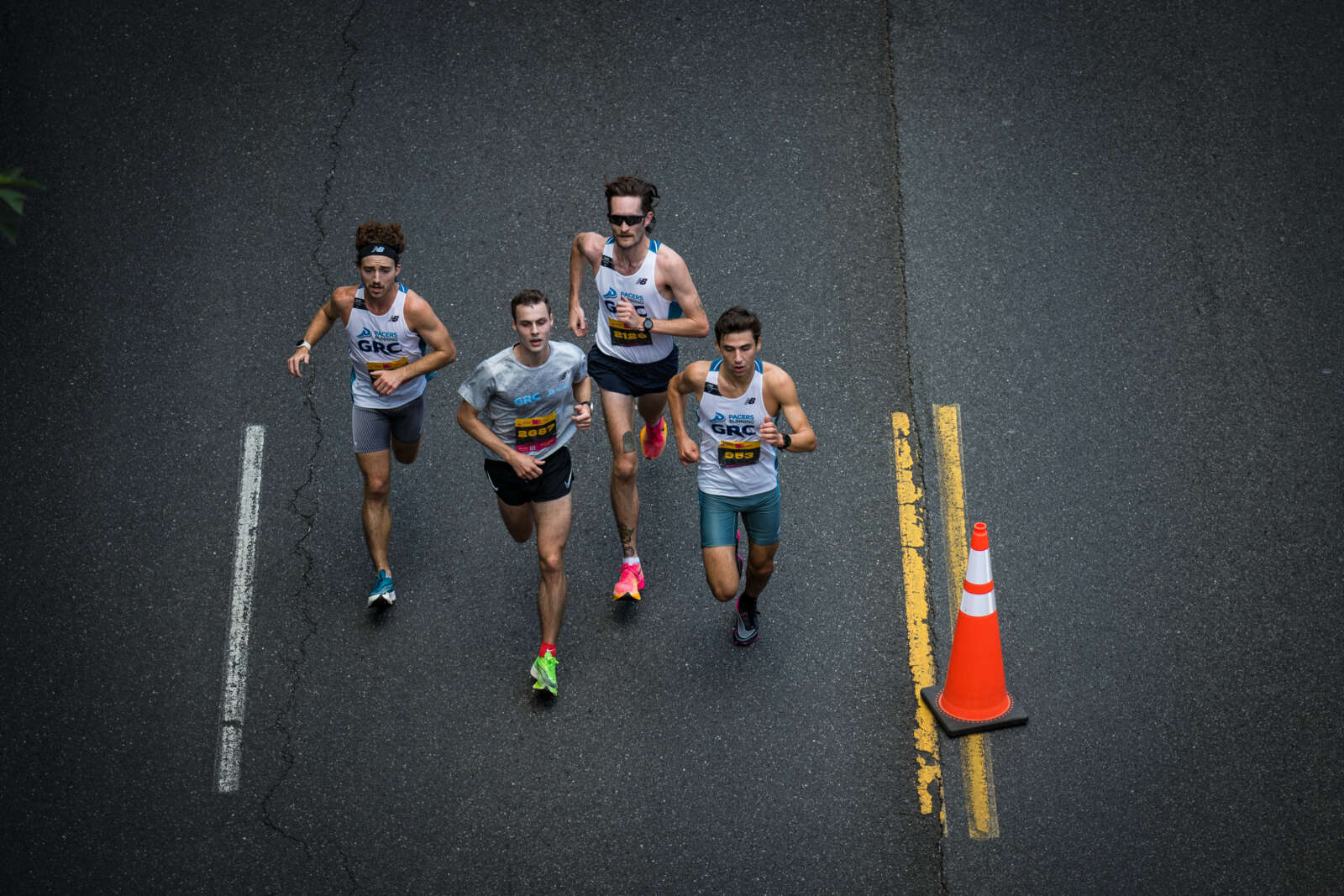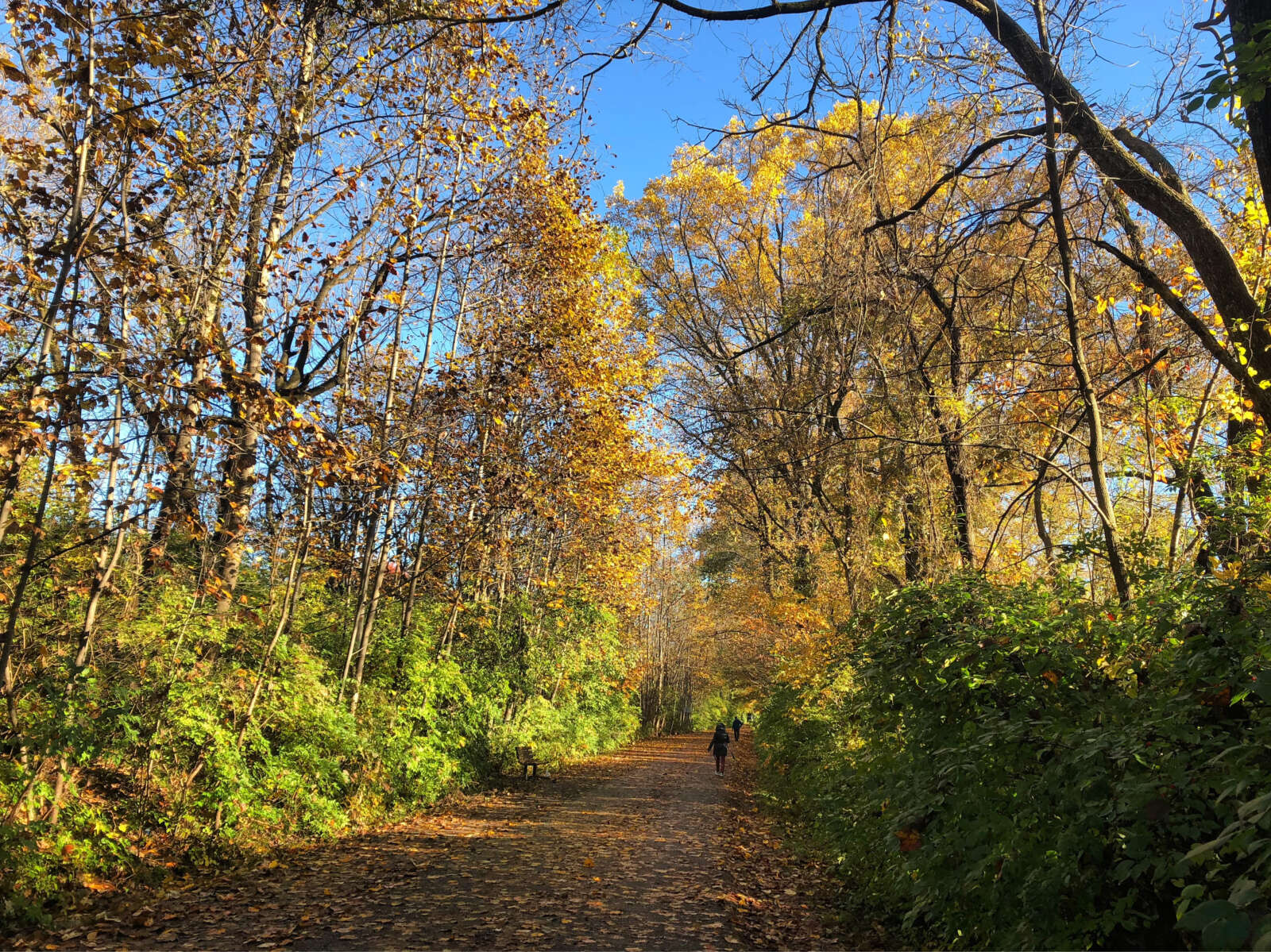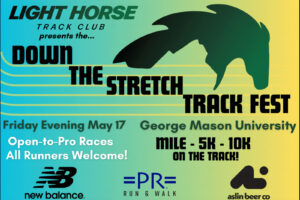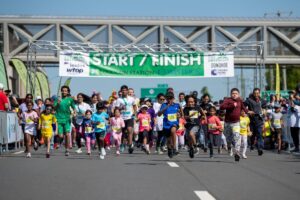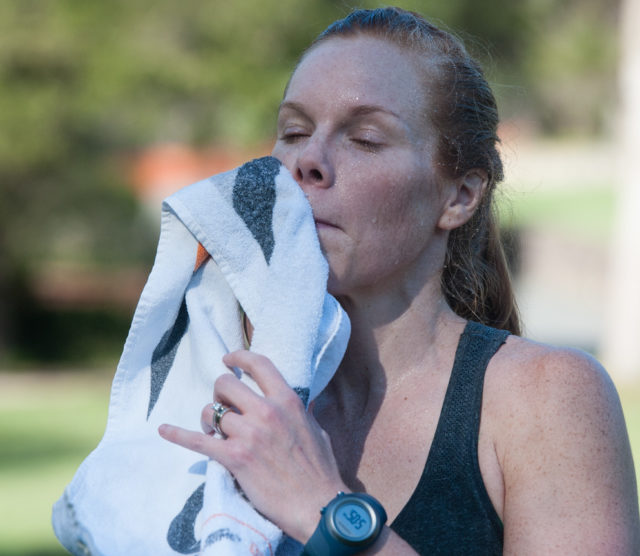
Editor’s note: This was originally published in 2016, but this seems like a good time to revisit it.
Summertime in DC: stepping out the front door is like stepping into a sauna. You don’t generally notice air, but today its presence is palpable and oppressive, a thick cloud that weighs on you and seems to stall your forward progress. Within seconds you’re sweating buckets, water pouring off you in all directions. What is this torture?
It’s not the heat; it’s the humidity.
“I hate it,” said Chelsea Cox, who lives in D.C. and competed in the 800 meters at the 2016 USA Track and Field Indoor Championships. “It’s just miserable to me, especially when the heat gets high.”
Humidity’s misery comes from its disruption of the body’s cooling system. “The basic mechanism by which we cool ourselves in the heat is by sweating,” said Dustin Slivka, an exercise physiologist at the University of Nebraska at Omaha. But, “Sweating alone doesn’t cool our body. What cools our body is the evaporation of the sweat off our skin.” When the air is already saturated with water–as on humid days–the water on our skin has nowhere to go. “When there’s high humidity that sweat is less likely to evaporate off our skin. It’s more likely to just roll of us and create a puddle, which does us no good from a thermoregulation cooling standpoint,” Slivka said.
And if your body isn’t cooling properly, running becomes a struggle. More blood is shunted to the skin in a fruitless attempt to release some of the heat through sweat, but this means less blood is sent to the muscles. The result? You slow down.
But perhaps it’s not all bad. “In order to get adaptations in the body, you have to stress it,” said Santiago Lorenzo, who competed in the decathlon at the 2004 Olympics and is now an exercise physiologist and professor at Lake Erie College of Osteopathic Medicine-Bradenton in Florida. One well-known method of stress is to spend a few weeks living or training at altitude. Runners flock to places like Flagstaff, Ariz. or Boulder, Colo. to breathe in the less oxygenated air and force their bodies to make do. They return to sea level with tougher, stronger systems — full of more red blood cells to carry oxygen to working muscles faster — and, they hope, improved race times.
Some say humidity is the poor man’s altitude. Might our struggles in the summer stuffiness pay off in a similar way come fall?
Although humidity hasn’t been well studied, we do know that exercising in the heat — the other half of the DMV’s brutal summer combo — can lead to big improvements in performance.
While in graduate school at the University of Oregon, Lorenzo studied if heat acclimation improves cyclists’ performance. Compared to doing all workouts in ideal conditions, he showed that doing some easy rides in the heat–while still doing the harder, intense workouts in cooler temperatures–improved time trial performance by 8 percent in hot conditions and 6 percent in cool conditions. (An 8 percent improvement would mean a 2-minute PR for a 25-minute 5k runner.) The hotter sessions forced the athletes’ bodies to adapt by increasing blood volume, cardiac function, and sweat rate and these improvements boosted performance no matter the temperature.
However, temperature was the only variable in the study; humidity was low in all the conditions. Adding the element of humidity is next on many researchers lists, but hasn’t yet been investigated.
Still, Lorenzo suspects humidity could have advantages, just as heat does, by stressing the body and forcing it to work a bit harder.
“In a way [humidity] could even be beneficial,” he said. “You’re not able to cool your body off as efficiently because of the high humidity, but in the end your body will keep trying to adapt. In that process your thermoregulatory system will keep being pushed to be improved.”
Christopher Minson, a physiologist at the University of Oregon and Lorenzo’s graduate school advisor, is currently studying overdressing, the non-D.C. man’s humidity. By wearing additional layers, you block the evaporative cooling effect. Many athletes use this technique to prep for hot weather races. (Maegan Krifchin, of Silver Spring, did this ahead of her seventh place finish in this year’s steamy Olympic Trials marathon.)
Minson suspects overdressing (and, by correlation, humidity) causes some adaptations by raising the body’s core temperature. When the body temperature rises, it activates proteins that help create the physiological changes and adaptations. “We think a large part of the adaptation to training in the heat is getting your core temperature above a certain threshold,” Minson said. Since sweating provides little cooling on humid days, those conditions may also raise the body temperature above the critical threshold. Although Minson isn’t sure humidity alone will work as well as heat, fortunately, in D.C., we have both.
But is our heat and humidity combo analogous to altitude?
Not quite. For one thing, Lorenzo says the mechanisms are completely different. Altitude boosts red blood cell production, which could help to deliver more oxygen to the muscles. Heat (and possibly humidity) increases blood volume and sweating.
Slivka agrees they’re not synonymous. “Some of the same outcomes may be seen from slightly different mechanisms.” Both might lead to performance benefits, but for different reasons.
But Cox, who has trained at altitude, thinks the two can wear on your in similar ways. When in Flagstaff, “No matter how much I slept, or how much caffeine I drank, I never felt like I was fully caught up on my energy,” she said. “I can definitely relate that to the humidity in DC. You’re always feeling bogged down even hours after you train; it still feels like you need a lot more to get your energy back up.”
How can we cope with the sluggishness?
Krifchin, who has also trained in Flagstaff, emphasizes recovery. “Recovery is key in any type of training, whether you’re in the most ideal climate or not.” Make sure to rehydrate well to replace that sweat puddle you left behind.
And accept slower times during summer’s hot and humid days. Don’t expect to run the same pace at a steamy Independence Day race as you would at a crisp Turkey Trot. Runners training at altitude know they won’t hit the same paces as they can at sea level, but aren’t worried about it. But, just like the effects of altitude living pay off at sea level, Lorenzo’s study showed heat training improves performance even when the weather cools, so that Turkey Trot could go even better than expected.
Kathy Pugh, a running coach and director of training for the D.C. Road Runners Club, agrees that it will pay off come fall. But, in the meantime, she recommends caution. Heat and humidity are “nature’s way of telling you to dial it back a bit,” she said. “I would advise people to go easier.” She encourages all runners to be extra careful about hydration, go with friends, stick to shaded routes, and run at dusk or dawn, especially for speed work sessions. Note that the athletes in Lorenzo’s study did their intense workouts in cool conditions, so an indoor treadmill would be another great option.
And, of course, be patient. “For the very first few sessions maybe you’ll have to run a little slower, maybe for a shorter amount of time, but eventually the body will adapt and it will get easier,” said Lorenzo. “You just have to stick with it and listen to your body so you do not get too hot.”
“Know that it’s going to feel uncomfortable and miserable at times, but embrace that rather than be scared of it,” said Cox. “It makes you a much tougher athlete.”
Krifchin agrees. “I think grinding it out in heavy heat and humidity where you’re drenched in sweat and you’re getting slightly dehydrated, that brings out that mental toughness and the hardcore component. It gives you a little bit of an edge on your race competitors.”
Recent Stories
Down The Stretch Track Fest
Down The Stretch Track Fest is a track celebration!
A distance-focused track meet at George Mason University featuring community-to-pro-level races on Friday evening, May 17th.
New Balance merch, Aslin Beer, music all night, and announcers keeping you up-to-date on the
Run the Greenway
We are just days away from the 4th annual Run The Greenway Race and
spots are filling up fast! We don’t want any Jedi to be left behind at this year’s
5K, 10K, or 800-meter Kids Fun Run, or virtual


